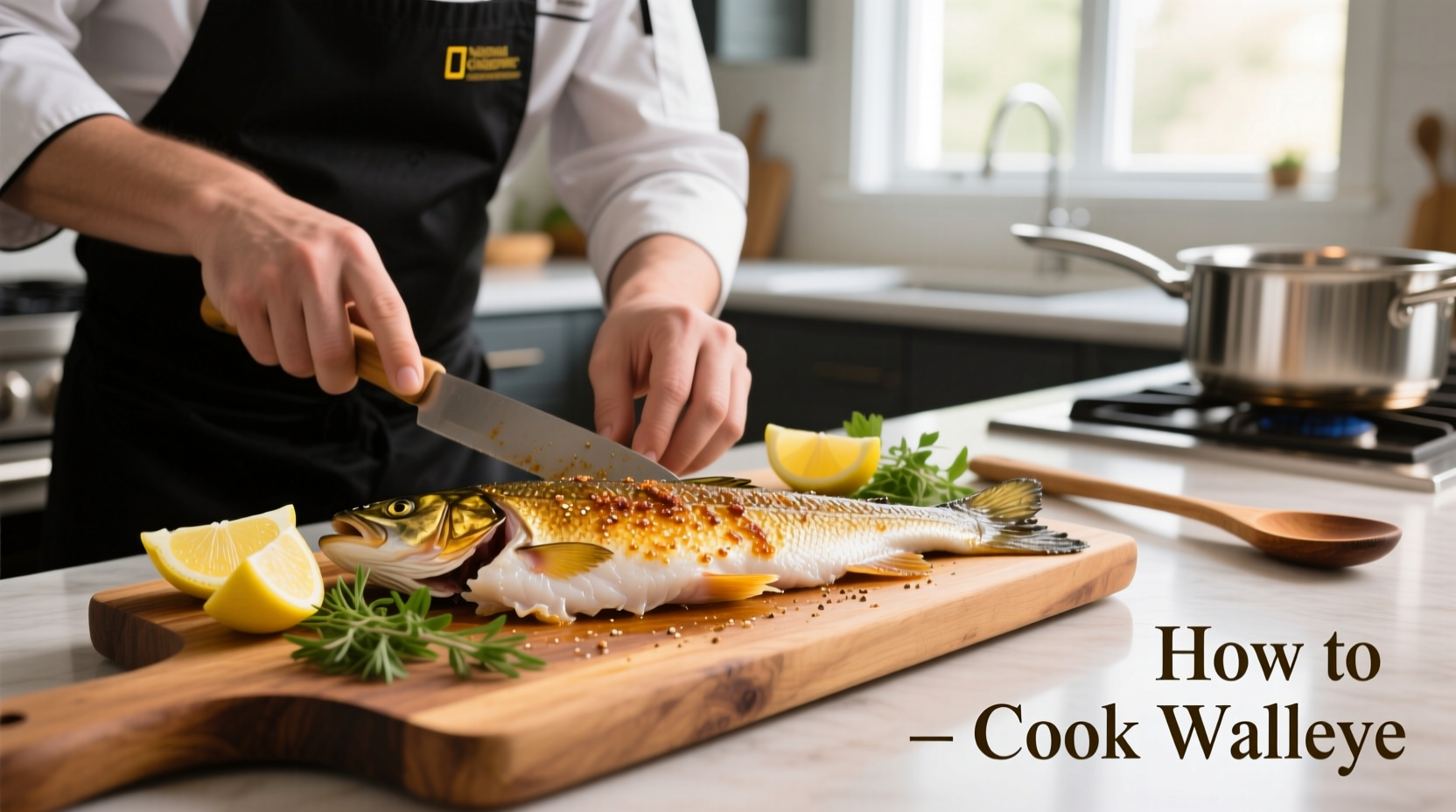Perfectly cooked walleye features flaky, moist flesh with a delicate sweet flavor. Achieve restaurant-quality results by cooking to 145°F internal temperature using gentle methods like pan-searing with clarified butter, baking at 400°F for 12-15 minutes, or grilling over medium heat for 4-6 minutes per side. Always handle this delicate fish carefully to prevent breaking and enhance its natural flavor with simple seasonings like lemon, dill, and garlic.
The Ultimate Guide to Cooking Walleye Like a Pro
Walleye's delicate texture and subtle sweet flavor make it a prized catch across North America's freshwater lakes. This popular sport fish requires careful handling to avoid dryness or flakiness during cooking. Unlike sturdier fish like salmon, walleye's lean flesh needs precise temperature control and gentle techniques to maintain its premium quality.
Why Walleye Demands Special Cooking Attention
Understanding walleye's unique properties is crucial for perfect results. This freshwater fish contains less fat than ocean varieties, making it prone to drying out if overcooked. According to the FDA Seafood Guidelines, walleye should reach 145°F internal temperature for safe consumption, but its delicate nature means even 5 minutes of overcooking can ruin its texture.
| Cooking Method | Temperature | Time Per Inch | Best For |
|---|---|---|---|
| Pan-searing | Medium-high (375°F) | 3-4 minutes per side | Thin fillets, quick meals |
| Baking | 400°F | 12-15 minutes | Thick fillets, hands-off cooking |
| Grilling | Medium (350-400°F) | 4-6 minutes per side | Whole fillets with skin |
| Broiling | High | 5-7 minutes | Thin fillets, crispy finish |
Essential Preparation Steps You Can't Skip
Before cooking, proper preparation ensures optimal results. Start by checking for remaining pin bones using tweezers—walleye's fine bones can remain even after professional filleting. Pat fillets completely dry with paper towels; moisture creates steam instead of the desired sear. For best flavor development, season with salt 15 minutes before cooking to allow penetration without drawing out moisture.
Wisconsin Sea Grant, a university extension program, recommends chilling walleye fillets for 20 minutes before cooking to firm the flesh. This simple step prevents delicate fillets from breaking during handling and flipping.

Top 3 Cooking Methods for Flawless Results
Pan-Searing for Restaurant-Quality Crispness
This method delivers the perfect golden crust while keeping the interior moist. Use clarified butter instead of oil—it has a higher smoke point and won't burn at the necessary medium-high heat. Heat your skillet until a drop of water sizzles immediately, then add just enough clarified butter to coat the bottom.
Place fillets skin-side down (if skin-on) at a 45-degree angle away from you to prevent oil splatter. Cook undisturbed for 3-4 minutes until the edges turn opaque halfway up. Flip carefully using a thin spatula and finish for another 2-3 minutes. The University of Minnesota Extension confirms that walleye's delicate structure requires minimal flipping to maintain integrity.
Baking for Hands-Off Perfection
Baking works best for thicker cuts and ensures even cooking. Preheat your oven to 400°F and line a baking sheet with parchment paper. Brush fillets with melted butter or olive oil and season simply—walleye's subtle flavor shines with minimal seasoning.
Place fillets on the prepared sheet and bake for 12-15 minutes until the flesh flakes easily with a fork. For added flavor without compromising texture, top with lemon slices and fresh dill during the last 5 minutes of cooking. Avoid covering the fish, as steam will make the exterior soggy.
Grilling for Smoky Flavor Without Falling Apart
Grilling walleye successfully requires careful preparation. Soak a cedar plank in water for 1 hour before cooking, which prevents burning and infuses subtle wood flavor. Alternatively, oil the grill grates thoroughly and ensure they're hot before adding fish.
Cook over medium heat (350-400°F), placing fillets at a 45-degree angle to the grates for attractive sear marks. Cook for 4-6 minutes per side—resist the urge to flip early. The Minnesota Department of Natural Resources notes that walleye caught during spring spawning season has slightly higher fat content, making it more forgiving on the grill.
How to Tell When Walleye Is Perfectly Cooked
Overcooked walleye becomes dry and loses its delicate flavor. The most reliable method is using an instant-read thermometer—remove from heat at 140°F as carryover cooking will bring it to the FDA-recommended 145°F.
Without a thermometer, check for these visual cues:
- Flesh turns opaque from translucent
- Fillets flake easily when gently pressed with a fork
- Edges pull away slightly from cooking surface
Flavor Pairings That Enhance Walleye's Natural Taste
Walleye's mild flavor pairs beautifully with complementary ingredients that don't overpower. Classic Midwestern combinations include:
- Lemon-dill butter sauce (equal parts melted butter, fresh dill, and lemon juice)
- Simple breadcrumb topping with parsley and garlic
- Light white wine reduction with shallots
Avoid heavy sauces that mask walleye's delicate flavor. Instead, finish with a squeeze of fresh lemon juice just before serving to brighten the natural sweetness.
Common Walleye Cooking Mistakes to Avoid
Even experienced cooks make these critical errors with walleye:
- Over-seasoning: Walleye's subtle flavor disappears under heavy spices
- Moving too soon: Flipping before proper sear forms causes tearing
- Crowding the pan: Creates steam instead of sear, leading to soggy texture
- Skipping the rest: Cutting immediately causes juices to escape
Let cooked walleye rest for 3-5 minutes before serving. This allows proteins to relax and redistribute juices throughout the fillet, ensuring maximum moisture retention.
Storing Leftovers Properly
Store cooked walleye in an airtight container in the refrigerator for up to 2 days. When reheating, use gentle methods to prevent further cooking:
- Low-power microwave in 30-second intervals
- Warm in a covered skillet with a splash of water
- Place in a foil packet and warm in oven at 250°F
Never refreeze previously frozen walleye after cooking, as the delicate texture breaks down significantly. For best results, freeze raw walleye properly wrapped for up to 6 months before cooking.











 浙公网安备
33010002000092号
浙公网安备
33010002000092号 浙B2-20120091-4
浙B2-20120091-4